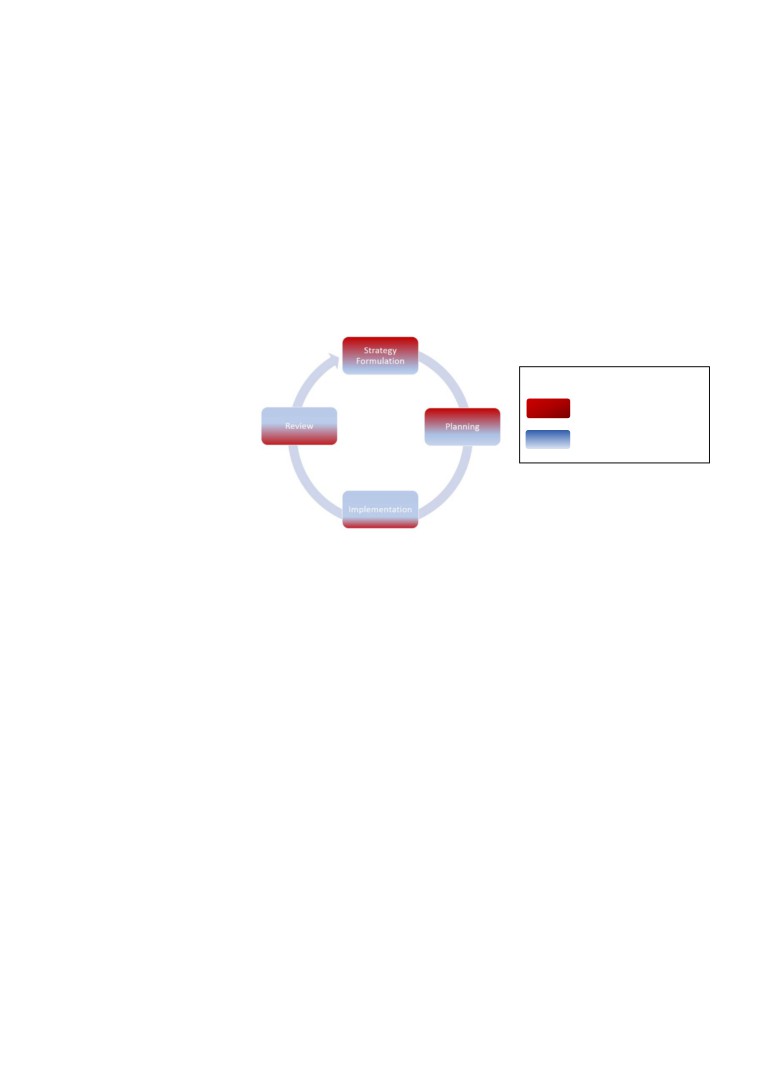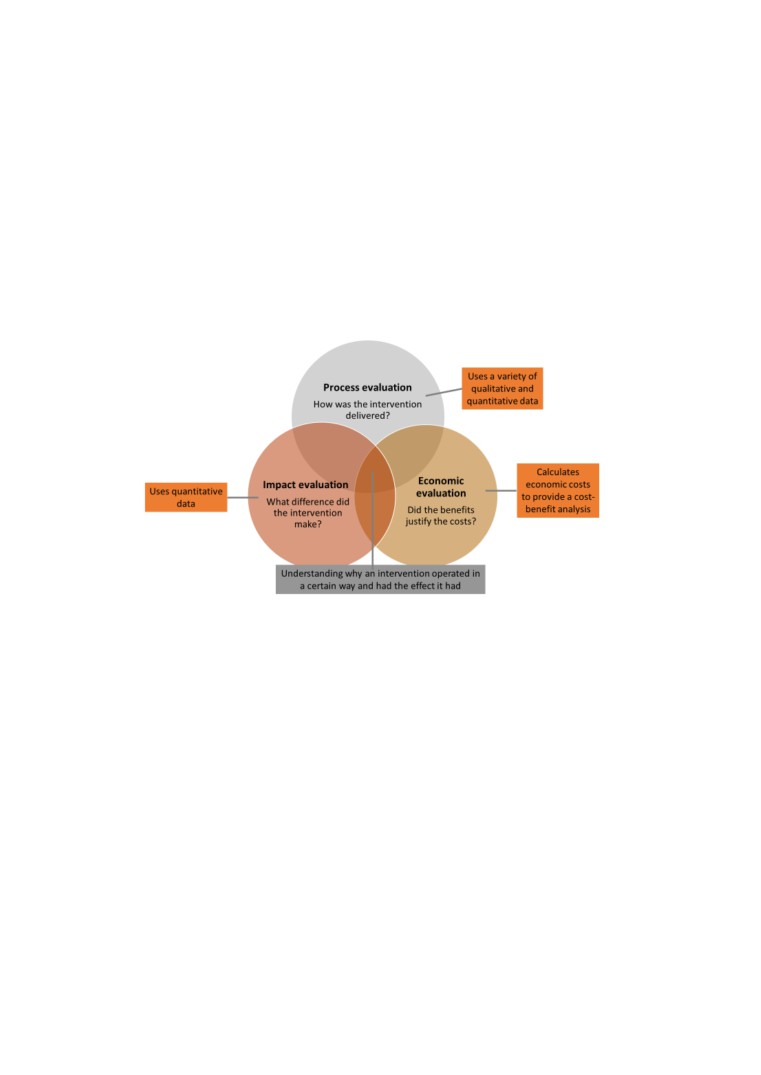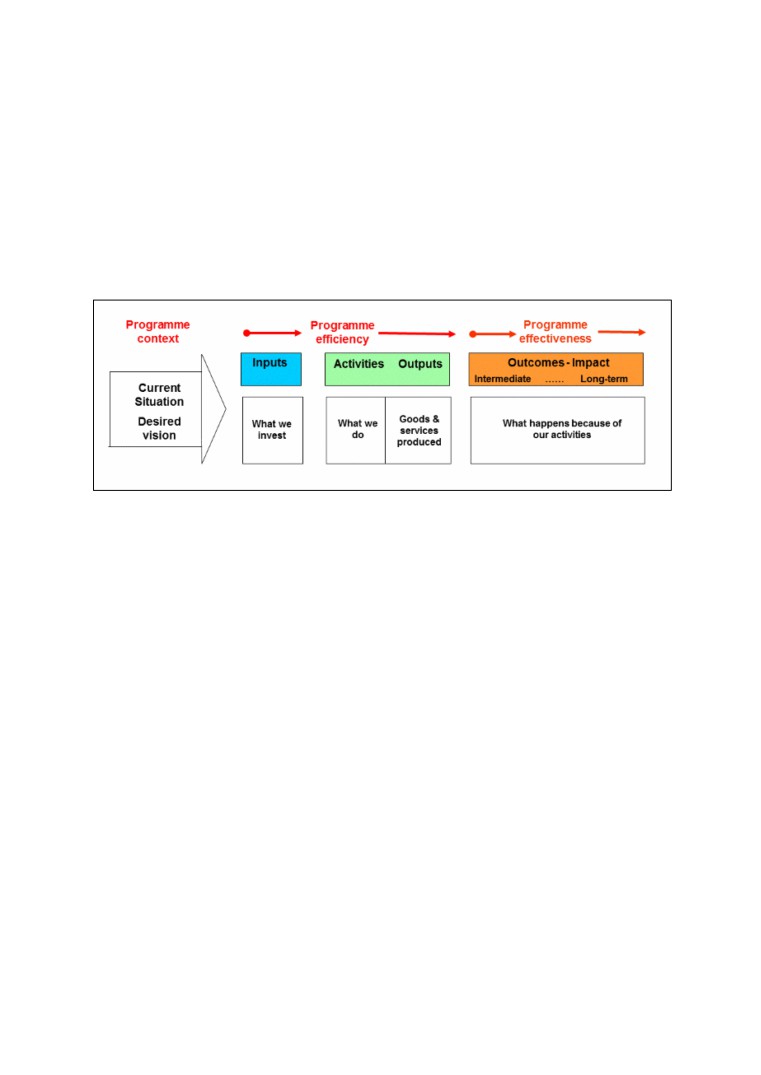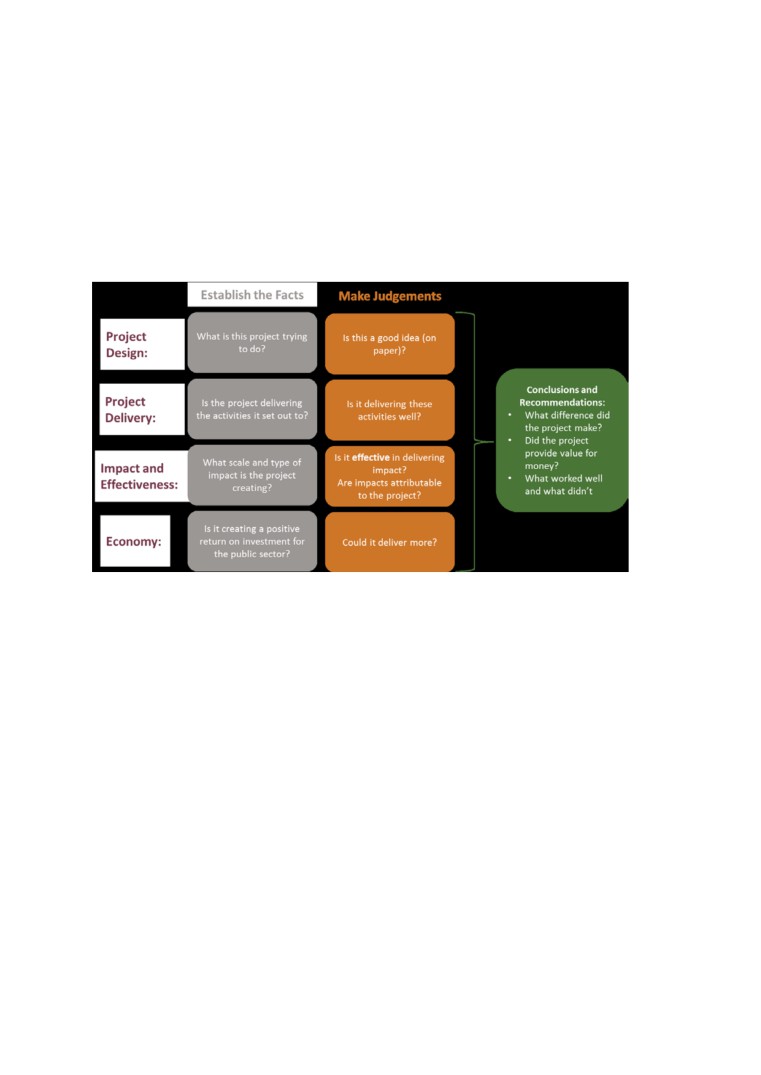Monitoring and Evaluation Guidance
1.
Introduction
This guidance sets out the LEP’s approach for monitoring and evaluation and provides
important principles for effective evaluation. It’s based on central government guidance and
supersedes the Monitoring and Evaluation Framework which was written for the Growth
Deal. This guidance is delivered through a Programme of Evaluation.
The purpose of this guidance is to support the monitoring and evaluation of projects across
the LEP’s portfolio of investments. This guidance is broad in scope in order to cover all
investments funded through the LEP, including but not limited to:
• Growth Deal Funding
• Growing Places Fund
• Growing Business Fund and associated grant schemes
• New Anglia Capital
• Enterprise Zone Accelerator Fund
• Eastern Agri-tech Growth Initiative
• Voluntary Challenge Fund
• European funded programmes
The purpose of monitoring and evaluation is to provide the LEP and its partners with real
and proportionate intelligence to understand:
(a) Progress being made towards delivery of the Economic Strategy for Norfolk and
Suffolk;
(b) The impact our programmes / projects are having on our ambitions to increase
productivity, deliver more houses, new businesses and create more jobs;
(c) Enable us to test delivery models against effectiveness and determine whether a
project or intervention is delivering as planned and whether resources are being
effectively used; or to justify reinvestment or resource savings.
(d) To identify which activities / programmes have had the most impact and lessons for
use in delivering future projects and programmes.
(e) To justify future activity and enable further funding opportunities.
(f)
To determine whether assumptions made were the right assumptions and whether
the project / intervention delivered and met the expectations and needs of the
business community.
(g) Provide Government with robust and timely information and analysis to sustain
confidence in our ability to deliver projects/programmes and/or achieve our
objectives.
The LEP has developed a Strategic Management Cycle to show the important links between
strategy development, planning, implementation and review/evaluation (figure 1).
Strategy Formulation
Development of the LEP’s ambitions and intent (i.e. what the LEP and partners want to
achieve and by when) which are expressed as a range of specific high-level objectives.
1
Revised 01/11/2019
Planning
Determining how to achieve the LEP’s ambitions and supporting objectives, identifying
resources required and developing programmes/projects/interventions which will help realise
these ambitions, incorporating monitoring and evaluation criteria.
Implementation
Delivery of LEP programmes/projects/interventions, working with partners and monitoring
and reporting progress to the LEP Board, LEP partners and Government.
Review
Evaluation of LEP programmes/projects/interventions, determining their effectiveness and
measuring outcomes and impacts to determine whether the anticipated benefits have been
realised.
Key:
Strategy team
Programmes Team
Figure 1: The Strategy Management Cycle
Good-quality evaluations play important roles in setting and delivery of the LEP’s ambitions
and objectives, demonstrating accountability and providing evidence for independent
scrutiny processes. They also contribute valuable knowledge towards our evidence base,
feeding into future strategy development and occupying a crucial role in determining our
future projects.
Not evaluating, or evaluating poorly, means that the LEP will not be able to provide
meaningful evidence in support of any claims it makes about the effectiveness of a
programme or project intervention; effectively rendering any such claims unfounded.
Evaluations should be proportionate to spend and based on what is possible as well as
being tailored to the programme, intervention or project being considered, and the types of
questions it is hoped to answer.
Considering evaluation early in the development of a programme or intervention will enable
the most appropriate type of evaluation to be identified and adopted.
2.
What is a good evaluation?
A good evaluation is an objective process which provides an unbiased assessment of a
project’s performance.
Good evaluations should always provide information which could enable less-effective
programmes or projects to be improved, support the reinvestment of resources in other
activities, or simply save money. More generally, evaluations generate valuable information
2
Revised 01/11/2019
which can be used in a variety of ways and are a powerful tool to help inform future
strategies.
Good evaluation, and the reliable evidence it generates, provides direct benefits in terms of
performance and effectiveness of the LEP and its partners; supports democratic
accountability; and is key to achieving appropriate returns from Government funding.
All evaluations should be grounded in the availability of high-quality data.
3.
Evaluation Approach
Monitoring and evaluation should be incorporated into the development and planning of a
project from the start and agreed through Heads of Terms. This is important to ensure
successful implementation and the responsible, transparent management of funding and
resources. Monitoring and evaluation is a process of continuous improvement which is
illustrated through the ROAMEF cycle, produced in the Treasury’s Green Book, Appraisal
and Evaluation in Central Government.
Rationale
Feedback
Objectives
Evaluation
Appraisal
Monitoring
Figure 2: ROAMEF Cycle
• Rationale is the reasoning behind why we have chosen to do a particular project
• Objectives are those which we expect the project to achieve
• Appraisal takes place after the rationale and objectives of the project have been
formulated. The appraisal determines whether the project fulfils our criteria on
deliverability, additionality and value for money and whether it fits with the ambitions
and objectives outlined in the Economic Strategy. The appraisal may be carried out
by an independent third-party to ensure fairness and transparency.
• Monitoring checks progress against planned targets and can be defined as the
formal reporting and evidencing that spend and outputs are being successfully
delivered, and milestones met. Monitoring is undertaken by the LEP’s programmes
team.
• Evaluation assesses the effectiveness of a project or intervention both during and
after implementation. It measures outcomes and impacts to determine whether the
3
Revised 01/11/2019
anticipated benefits have been realised. It reviews the approach to determine
whether it was the right approach and whether we could do things better in future.
Evaluations can be carried out by the LEP or an independent third party.
• Feedback - using and disseminating the evaluation findings is critical for influencing
decision making and for determining strategy planning.
4.
Types of Evaluation
The LEP employs a combination of three types of evaluation approach - process, impact
and economic - to assess the outcomes of the programme / project (i.e. how it was
delivered, what difference it made, whether it could be improved and whether the benefits
justified the costs) - see figure 3. Appendix 1 sets out the differences between these three
types of evaluation.
Figure 3: Different Types of Evaluation
To find out why a project operated in the way it did, and had the effect it had, requires a
combination of all of these types of evaluation and these need to be designed and planned
at the same time.
Before deciding which evaluation approach is appropriate, a wide range of factors need to
be considered, including:
• the nature and scale of the project, complexity, innovation, its implementation and
future direction;
• the objectives of the evaluation and the types of questions it would ideally answer;
• the timing of key policy decisions and the information on which they need to be based;
• the types of impacts which are expected, the timescales over which they might occur,
and the availability of information and data relating to them and other aspects of the
project;
• the time and resources available for the evaluation.
4
Revised 01/11/2019
5.
Identifying the right type of evaluation for the project
The level of evaluation should be based on what will achieve the most comprehensive outcome,
although the aspiration is that programmes should be evaluated counterfactually (what would
have happened to the outcomes in the absence of the intervention). Where this is truly not
feasible, nor value for money, lower thresholds of evaluation design can still be meaningful.
Evaluation types (and/or methods) are determined by the nature of the questions they attempt to
answer. It is important to begin an evaluation by being clear on what is wanted from the
evaluation. A logic model helps by providing a project outline that helps develop different
measures of success that track the project’s development and impact over time.
The logic model (figure 4) should be used for each evaluation to illustrate the key elements
the project / intervention contributed to the outcome of the project.
Figure 4 - Logic Model
The various elements of the logical model are explained below:
• Inputs - (resources and/or infrastructure) - what raw materials will be used to deliver
the project/intervention (inputs can also include constraints on the programme, such
as regulations or funding gaps, which are barriers to the project’s objectives)?
• Activities - what does the intervention need to do with its resources to direct the
course of change?
• Outputs - jobs created, match funding, new houses, etc.
• Outcomes (or impacts) - what kinds of changes came about as a direct or indirect
result of the activities?
•
‘Impact site’ this is the area which has been positively influenced by some kind of
change due to the project. This can be a specific location or a wider area.
It is therefore important to have a clear idea of the questions that need to be addressed and
the required type(s) of evaluation at the early stage in developing the programme or
intervention to help inform the design of the evaluation and the resources required.
The following provides information on the different types of evaluation used within the LEP:
Process Evaluation: How was the project delivered?
Process evaluations use a variety of qualitative and quantitative data to explore how the
project was implemented; assessing the actual processes employed, often with
assessments of the effectiveness from individuals involved or affected by implementation of
the project.
5
Revised 01/11/2019
There is an overlap between the types of questions answered by process evaluation and
those addressed through impact evaluation. Programme / project delivery can be described
in terms of output quantities, such as jobs and new businesses created. But these are also
measurable outcomes of the project. This means that process evaluations often need to be
designed with the objectives and data needs of impact evaluations in mind and vice versa.
Using and planning the two types of evaluation together will help to ensure that any such
interdependencies are accounted for.
Impact Evaluation: What difference did the project make?
Impact evaluation uses quantitative data to determine whether a project was effective in
meeting its objectives. This involves focusing on the outcomes of the project.
A good impact evaluation recognises that most outcomes are affected by a range of factors,
not just the project itself. To assess whether the project was responsible for the change, we
need to estimate what would have happened if the project had not gone ahead (i.e.
‘business as usual’). To help this type of evaluation, the business case would need to
include these estimates and forecast the difference the project could make.
A reliable impact evaluation may demonstrate and quantify the outcomes generated by a
project, but on its own it will not be able to show whether those outcomes justified that
project. Economic evaluation considers such issues, including whether the benefits of the
project have outweighed the costs.
Economic evaluation: Did the benefits justify the costs?
Economic evaluation involves calculating the economic costs associated with a project and
translating its estimated impacts into economic terms to provide an understanding of the
return on investments or value for money. There are different types of economic evaluation,
including:
• Cost-effectiveness analysis produces an estimate of “cost per unit of outcome” (e.g.
cost per additional individual placed in employment), by taking the costs of
implementing and delivering the project and relating this to the total quantity of
outcome generated.
• Cost-benefit analysis examines the overall justification for a project by quantifying as
many of the costs and benefits as possible, including wider social and environmental
impacts (such as air pollution, traffic accidents etc) where feasible. It goes further
than the cost-effectiveness analysis by placing a monetary value on the changes in
outcomes as well (e.g. the value of placing an additional individual in employment).
This means that the cost-benefit analysis can also compare projects which have
quite different outcomes.
• Net Treasury Gain can be described as ‘for every £1 spent, an additional £X is
generated for the economy’. This could be used as leverage for Government funding
- demonstrating that a project generates more money for the Government than it
costs to run (i.e. positive net treasury gain).
Economic approaches value inputs and outcomes in different ways. It is therefore important
that the needs of any economic evaluation are considered in the development and planning
of a project at the start. Otherwise, an evaluation may generate information which, although
highly interesting and valid, is not compatible with a cost-benefit framework, making it very
difficult to undertake an economic evaluation.
6
Revised 01/11/2019
6.
Key Evaluation Questions
Having a set of Key Evaluation Questions (KEQs) makes it easier to decide what data to
collect, how to analyse it and how to report it. A maximum of 5 - 7 main questions will be
sufficient. It may also be useful to have some more specific questions under the KEQs.
KEQs are open questions, broad enough to be broken down, but specific enough to be
useful in guiding you through the evaluation. They are good at reminding us to explore why
something occurred, what worked for whom, and so on. KEQs should lead to useful,
credible, evaluation and are not the same as a question in a survey. Below are some
examples of KEQs:
Source: Regeneris Consulting
7.
Overview of Evaluation within the LEP
A number of steps need to be considered when designing and managing an evaluation
which are detailed in Appendix 2. In broad terms, monitoring and evaluation consists of:
• Annual strategic review - reflecting on progress against the Economic Strategy,
evidencing action taken to deliver against ambitions. A specific focus of the review
will be to evidence the strategic ‘added value’ achieved (e.g. the LEP working in
collaboration with partners), as well as securing direct investment. The review will
also reflect on overall economic performance and progress towards the economic
indicators.
• Monitoring of our Investment Portfolio - The LEP continues to monitor the
ongoing performance and progress of projects within its portfolio. The aim of which is
to:
o Understand progress and performance of investments, identify slippage and
risks to delivery; or to justify reinvestment or resource savings.
o Collect data that will support subsequent evaluation / impact studies;
o Report progress back to Central Government / funders.
The metrics used to monitor each of our programme investments is set out in our
LEP Programme Outputs - User Guide and Technical Annexe.
7
Revised 01/11/2019
• Evaluating Individual Investments - in addition to basic monitoring requirements,
each investment project will be required to produce a post-project evaluation report.
An Evaluation Programme has been developed which monitors the LEP’s portfolio of
investments. It identifies what will be evaluated; the timings of the evaluation; who
the person is who is responsible for designing the evaluation; and who the evaluation
will report back to. It also monitors the data being collected and whether the
evaluations will be conducted in-house or externally commissioned.
• Meta-Evaluation - the LEP may conduct strategic evaluations across its portfolio to
understand the impact on a specific theme or group of projects; learn lessons from
pilot/exploratory projects and build the evidence base on what works and why.
The exact nature of these evaluations will be informed by intelligence needs later in
future years but may explore particular investment themes (e.g. FE capital,
innovation infrastructure), specific geographies (e.g. investment in our priority
places). To enable us to undertake meta-evaluation studies, the LEP ensures there is
consistency in measuring success at individual project level.
Appendix 3 provides more detail on our evaluation approach.
8.
Programme of Evaluation
The Strategy Team maintains a programme of evaluation. This is a simple spreadsheet
which is completed by LEP exec staff responsible for monitoring project outputs and
ensuring evaluations are undertaken. The programme of evaluation is reviewed and updated
on a quarterly basis.
The programme of evaluation includes:
• An overview of what will be evaluated by when,
• Whether the evaluation will be conducted internally or externally commissioned,
• Whether the evaluation is a contractual requirements
• The chosen evaluation approach
• Who is leading the evaluation
• Who the evaluation will report back to
• The data being collected
The programme of evaluation can be found here: 2019-09-23 LEP Evaluation
programme.xlsx
8
Revised 01/11/2019
APPENDIX 1
Types of Evaluation
The following are the types of evaluation which can be used singularly, or combined, to assess the outcomes of
projects and programmes.
Type
Monitoring
Process Evaluation
Impact Evaluation
Economic
Evaluation
Purpose
To capture qualitative
To assess whether a
An objective test to
To compare the
and quantitative
programme or
assess what changes
benefits of the
information relating to
project is being
have occurred, and
programme /
inputs, activities,
implemented as
the extent to which
project with its
outputs at the individual
intended and what,
these can be
costs.
project or programme
in practice, is felt to
attributed to the
level.
be working more or
programme / project
less well, and why.
intervention.
What it
Whether it is on track to
How the programme
What difference the
Whether the
will tell
deliver on time / to
/ project was
programme / project
benefits justified
us
spend / expected
delivered.
made.
the costs.
outcomes.
When
Monitoring conducted
Variable - during or
Prioritised according
Annual - as part
monthly, quarterly or
soon after
to larger or
of review of
annually. In some cases,
implementation
innovative projects
Economic
ex post outcome
and programmes or
Strategy
evaluation will be
projects where
conducted
opportunities for
learning are greatest
Coverage
Monitoring coverage
Focused on key
Prioritised according
LEP-wide
will be universal
aspects of the
to larger or
delivery and
innovative projects
decision-making
and programmes or
infrastructure and
projects where
selected projects and
opportunities for
programmes
learning are greatest
9
Revised 01/11/2019
Appendix 2 - Planning an Evaluation
• What is it we want to achieve through the programme / project / intervention?
Defining the
objectives and
intended outcomes
• Who will be the main users of the findings and how will they be engaged?
Defining the
audience for the
evaluation
• What do we need to know about what difference the programme / project / intervention made, and/or how it was delivered?
Identifying the
• How broad is the scope of the evaluation?
evaluation objectives
and research
questions
• Is an impact, process or combined evaluation required?
• Is an economic evaluation required (i.e. to establish whether the benefits justified the cost)?
• How extensive is the evaluation likely to be?
Selecting the
• What level of robustness is required (i.e. strength of the evidence/fact or judgement/confidence level)?
evaluation approach
• What data is required?
• What is currently being measured / already being collected / available /
• What additional data needs to be collected?
• Who will be responsible for data collection and what processes need to be set up?
Identifying the data
requirements
• If the evaluation is assessing impact, at what point in time should the impact be measured?
• How large scale / high profile is the project / programme / intervention and what is a proportionate level of resource for the
evaluation?
• What is the best governance structure to have in place for the evaluation?
Identifying the
• Who is the project owner and who is providing the analytical support?
resources and
• Will the evaluation be externally commissioned or conducted in-house?
governance
• Is there any budget for this evaluation and is this compatible with the evaluation requirements? Has sufficient allowance been built in?
arrangements
• Who is responsible for developing the specification, tendering, project management and quality assurance?
• When does the primary data collection need to take place?
• Is piloting or testing of research methods needed?
Conducting the
• When will the evaluation start and end?
evaluation
• What will the findings be used for, and what decisions will they feed into?
• How will the findings be shared and disseminated?
Using and
disseminating the
evaluation findings
10
Revised 01/11/2019
APPENDIX 3
What
Why
How
Cost, Funding
Owner
Dissemination
When
and Resources
Annual
•
Demonstrate progress
Review conducted by the Strategy
Chief Operating
AGM
Complete by
Strategic
against Economic Strategy
team.
Officer
Website
AGM - Sept
Review
ambitions
Newsletter
2019
•
Strategic Added Value
Views gathered by:
•
Investment achieved
• LEP Executive and local authority
•
Economic Performance and
partners
progress against economic
• Key external stakeholders
indicators
• The LEP Board
• The Economic Strategy Delivery
Board
• LEP Leadership team
Monitoring
•
Understand progress and
Detailed in our Evaluation
Head of
Data sent to
Quarterly/6
our
performance of
Programme.
Programmes
Government, LEP
monthly/
Investment
investments, identify
Board and
annually
Portfolio
slippage and risks to
Leadership Team
depending on
delivery; or to justify
agreed
reinvestment or resource
reporting
savings.
framework.
•
Collect data that will
support subsequent
evaluation / impact studies;
•
Report progress back to
Central Government /
funders.
11
Revised 01/11/2019
Evaluating
Individual projects will be
Appendix x provides a template for
Project Budget
Project sponsor
Dissemination: LEP
End of project
Individual
required to produce a post
individual projects to use in
leadership and
Investments
programme evaluation report
developing their M&E plans.
management groups
covering (as a minimum):
and on-line
• Expenditure
• Outputs
• Impact
• Lessons learnt (process
and impact)
• Assessment of success
(meeting original
objectives and tackling
problem)
Meta -
Strategic Evaluation Studies to:
Externally commissioned evaluation
Resources (tbc)
Head of Strategy
On website
As and when
Evaluation
• Understand the impact of a
studies.
Promoted directly
required
specific or group of projects;
to: Project sponsors,
• Learn lessons from
LEP Board and
pilot/exploratory projects;
leadership groups
• Build the evidence base on
what works and why.
12
Revised 01/11/2019











